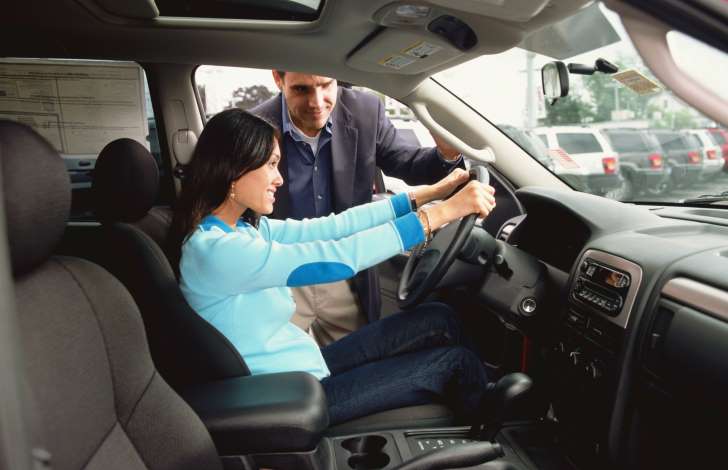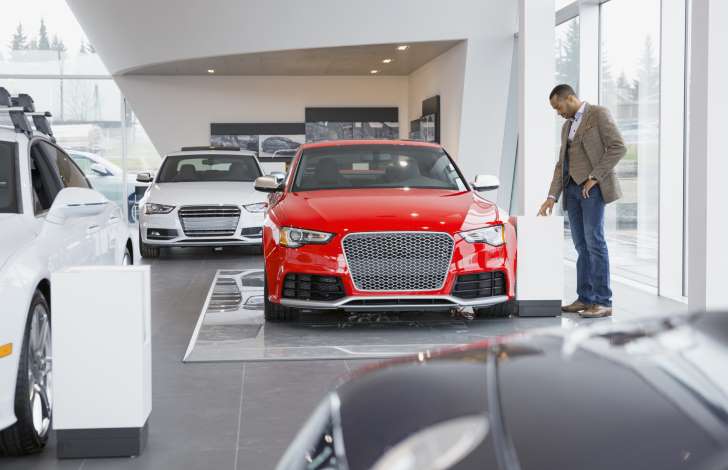Driving a brand-new car can be one of the great experiences of life. Walking into a dealership and buying one, on the other hand, ranks up there with public speaking and visits to the dentist atop most people’s lists of anxiety-inducing prospects. But it’s not really that scary if you’re prepared and knowledgeable. Then you can stride into that dealership informed, confident, and in charge of the whole process. We’ll help give you that confidence by steering you clear of these 10 mistakes people often make when they set out to buy a new car.
1) Not knowing what you’re after
Shopping for a car isn’t like looking for a new pair of shoes or even a smartphone. Rookie car buyers enter the dealership with only vague notions that they need a new set of wheels and how much they can pay per month. They’re ripe marks for a sales pitch that sees many people driving away in a new car from the first dealership they visit. The showroom floor isn’t the place to start your quest for a new car. Smart shoppers start with hours of online research at sites like Car and Driver’s Buyer’s Guide, where you can learn what’s available, compare costs and features, and read expert reviews and road tests and estimate financing costs. Most dealerships have internet sales departments that allow cross-shopping to compare what’s available and even negotiate prices before ever setting foot in their parking lot.
2) Not taking a test drive
One in six car-buyers never drove their new car before purchase, according to DME Automotive research. Another third took a cursory 10-minute spin around the block in one car. Not smart. As much as can be learned online, only a drive can reveal whether a vehicle suits personal preferences. Before settling on a single car as “the one,” also sample competitors. If you’ve been driving an old car for a long while, any new one will feel great. Visit several dealers and drive four to seven cars to get a true basis for comparison. Some dealers may try to limit your opportunity. If so, walk away. If not, make the test drive thorough and be sure to test the one you intend to buy or one with similar equipment. Again, cars aren’t shoes: It’s super-expensive to return a car that turns out to be a bad fit.
3) Negotiating from MSRP
Unless you’re at a Scion store, where everyone pays a no-dickering sticker price, you’re going to have to agree with the dealer on a transaction price. The Manufacturer’s Suggested Retail Price (MSRP) displayed on the window sticker is not a good starting point for that discussion. It may seem like a great deal if the sales rep offers to “knock $3000 off the sticker,” but maybe not. Numerous services online purport to reveal the “dealer invoice” that the dealership actually pays the manufacturer; it’s better to negotiate up from there than down from MSRP. However, it’s not unheard of to get a price that’s even below the supposed dealer invoice. Why? Because there are other elements of the transaction—dealers also get a “holdback allowance” from the carmaker and may get incentives on a slow-selling model (paid to the dealer only, aside from any rebate offered to the consumer).
4) Expecting to use dealer financing
Sure, the ads offer rates as low as zero percent, but the fine print says that’s only for those with a top credit score, for a few months, with a certain amount down. Better to shop your financing separately. See your bank or credit union first and, if possible, get preapproval on a car loan. Then you have something to compare against the dealer’s financing options. Sometimes, the dealer really can make you a better offer, but there’s no way to know that—or make it a negotiating point—if you have a comparable financing offer.
5) Shopping a monthly payment
Buyers should know how much they can budget monthly, but resist the temptation to make that the basis of the negotiation and especially don’t share that number with the sales staff. Instead, negotiate the actual sales price of the new car first, independent of down payment, trade-in, and financing arrangements. Handy online calculators (including one at the Car and Driver Buyer’s Guide) and phone apps will convert loan balance, term, and interest rate into a monthly payment for you. A dealer who knows you’ll buy at a certain payment may offer tempting lease or financing deals with payments stretched out over a longer term, but you’ll end up paying more overall. We’re assuming a purchase here; there are arguments for leasing, but that’s something you should research and decide about before shopping, not at the dealership just to hit a monthly number.
6) Discussing trade-in too early
It’s almost always possible—with time and effort—to sell an old car privately for more than the dealer offers in trade. Many buyers nevertheless find the convenience of driving their old car in and their new one away compelling. If that’s your aim, research the value of your trade-in beforehand but decline offers or pressure to discuss it until after you’ve settled the price on the new car. If it turns out that you’re “upside down” on the old car—that is, you owe more money on it than you’re getting in trade—you probably don’t belong in a new-car dealership yet. At the least, the car should be sold privately to pay off the debt. Yes, the dealer will offer to roll your old debt into a new loan. But that’s not a good idea.
7) Not being prepared to walk away
No new-car deal is too good to walk away from, because the sight of a shopper’s back is the consumer’s strongest negotiating tool. Do not accept, “this deal is only good today” or for 72 hours or whatever. If anything feels wrong, suspicious, or you don’t understand what’s happening, be ready to say, “I’m not comfortable with this. I want to sleep on it and do a little more research.” This can be hard to do if you get emotionally invested in the prospect of going home in a shiny new car, which is why dealers do their best to get you thinking with your heart rather than your head. Walk away, anyway. Only rookies are astounded when the dealer calls a day or two later and offers a better deal. If that call doesn’t come, there are other dealerships and other cars aplenty.
8) Shopping only one dealer
Forty percent of buyers have visited only a single dealership, says DME Automotive. Many of those will be loyalists who’ve found a dealer and brand they trust and they’re happy to keep going back. Even they, however, would benefit from having a look around, if only to make sure that their trusted dealer isn’t taking advantage of the relationship. Those who’ve decided on a make and model would do well to look at the internet sales departments on the sites of several nearby stores to see if there’s a better price on the desired car. If so, that’s at least a negotiating point for dealing with the nearer or more familiar outlet for that brand.
9) Forgetting about insurance
Many a buyer has struck a great deal that fits a carefully considered monthly budget only to find that new ride costs a lot more to insure than anticipated. Especially if you haven’t been driving new for some time, remember that the loan terms will require full-collision coverage to protect the lender. Check the rate on the cars you’re shopping with your insurer and competitors before going to dealerships. Perhaps you can save by choosing the smaller engine or a lower trim level or a competitive car costs less to insure.
10) Not questioning extras at close
When you finally sit down to close the deal and sign the papers, pay close attention and be prepared to say “no” a lot. This is when the dealer tries to sell things like fabric protection, extended warranties, or accessories that are either unnecessary or far more expensive than if bought elsewhere. Make sure you’re not charged extra for things you negotiated up front with the sales rep, like a third key fob or a full-size spare tire. Yes, the dealer can fold those costs into the deal so they’re financed, but no one wants to pay interest on the labor to “install” some spray-on coating. Be prepared to pay legitimate costs like title-transfer fees and taxes in addition to your cash down payment or you’ll end up paying interest on those, too, swelling your monthly outlay beyond what you calculated.



